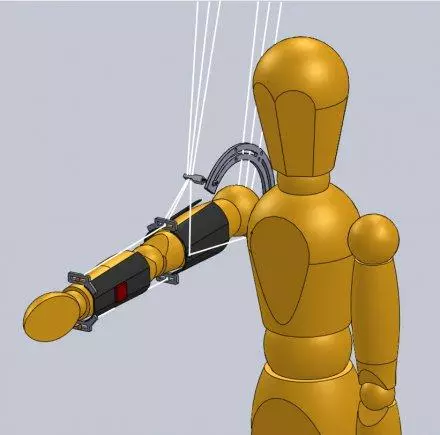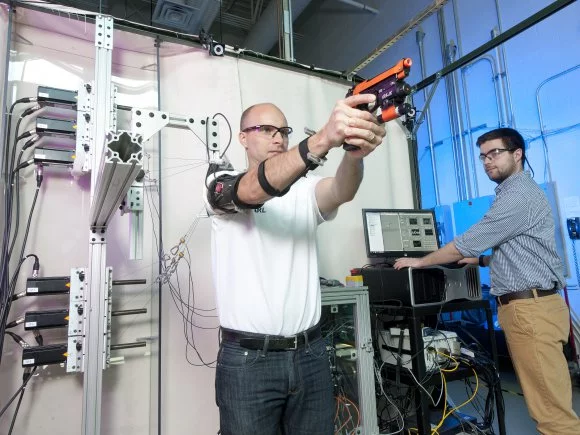Mention military exoskeletons and it will likely conjure up visions of something like Iron Man, that gives a soldier super strength or the ability to march all day with a pack the size of a piano. However, exoskeletons can provide more than brute strength. Taking a page from therapy exoskeletons, Dan Baechle, a mechanical engineer at the US Army Research Laboratory (ARL), is developing the MAXFAS exoskeleton that doesn't make soldiers stronger, but better shots instead.
Despite (or perhaps because of) a century of technological progress, the life of the combat infantryman remains a hard, physically-exhausting one. Carrying anything up to 100 pounds of gear, soldiers must march, crawl, and run across broken terrain day and night in all weather. Worse, despite fatigue and anxiety, they have to able to shoot quickly and accurately at any time – even when failure to do so can cost time, waste ammunition, or lose lives.
Part of the solution is that marksmen are as much made as born. With the right equipment and proper training, poor shots can become better ones, and good shots can become excellent. The trick is to train the shooter's hand so it remains steady during the critical moments. This is the purposes of MAXFAS.

To see what MAXFAS does, stop using the laser pointer to torment the cat, hold the pointer at arm's length, and aim it at the wall. You'll notice that even at a few feet, the laser spot wobbles noticeably. The effect is small, but compounded by the weight of a weapon and the fatigue of battle, then measured out over hundreds of yards, that little wobble can grow into the difference between a hit and a miss.
Currently a proof-of-concept setup, MAXFAS is a mechatronic arm exoskeleton made of light metal and carbon composites. It's based on a therapeutic robotic exoskeletal arm used at the University of Delaware to train stroke victims to move their arms properly, but instead of providing therapy, MAXFAS stabilizes the shooter's arm as a way of correcting errors and helping to increase proficiency.
In tests, subjects wore a laboratory version of the MAXFAS unit that consisted of a cable-driven arm with the motors mounted behind the wearer and rigged up like a huge marionette. The arm is attached to the wearer using carbon composite braces that are equipped with sensors that detect a tremor when taking aim and then signals the motors to adjust the cables and correct it, but does not affect voluntary movements. According to Bachele, when in use, the MAXFAS unit provided feedback that reduced the tremor, which remained reduced after the unit was removed.

Bachele hopes to bring together experts in the materials and human sciences to improve the concept, and create a more practical version that is lightweight in its final portable form because of the amount of gear soldiers in the field already carry.
"My vision is that one day, a more mature version of MAXFAS could be used to improve aim on the battlefield despite any adverse conditions," says Baechle.
Source: US Army





